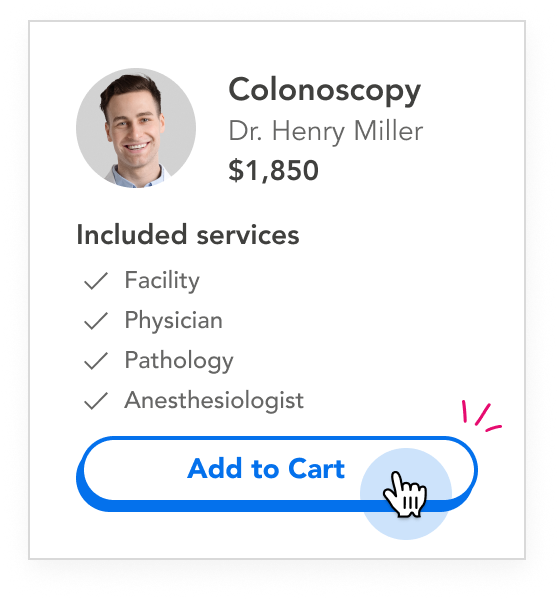MRI with and without Contrast
Mosaic Medical Center Albany - Imaging
Financing Options
Promotional financing available when you pay with CareCredit. $200 minimum purchase. What is CareCredit?
MDsave and Your Insurance
Contact your insurance company directly to see if your purchase can count towards your deductible. Details
Procedure Details
Price Details
Your purchase includes the following services:
Facility fee
technical (equipment) fee for the imaging
Physician fee
physician interpretation fee
Tendo Marketplace fee
Covers the cost of contracting upfront rates with all involved medical providers, processing payment, and distributing funds, minimizing administrative overhead and allowing for a lower total price
Note
This bundled price includes the cost of your procedure and the fees listed above. These fees are for the services most frequently packaged together with this procedure. Any services that are not listed here will not be covered in your purchase.
Money Back Guarantee
We will refund your payment in full if you end up not needing your purchased procedure and do not receive care. Details
About Mosaic Medical Center Albany - Imaging
About Radiology and Outpatient Imaging
The science of diagnostic radiology has changed greatly in recent years. Traditional X-ray and modern, computerized imaging techniques have reduced the need for exploratory surgery and have made early detection of many medical conditions possible.
Along with Mosaic Life Care’s highly experienced radiology specialists, our comprehensive imaging services simplify the process of obtaining MRIs, CT scans, ultrasounds and X-rays. We provide same-day appointments, quick results and machines designed to comfortably accommodate patients of all sizes.
Educations and Resources
Expert Radiologists in St. Joseph, MO
All imaging and radiology results at Mosaic Life Care are interpreted by our staff of board-certified radiologists who work closely with other doctors and hospital departments to ensure accurate diagnoses. Several members of our radiology staff are also certified in the subspecialties of neuroradiology, vascular radiology and interventional radiology.
Expert Technologists and Registered Nurses
The clinical staff at Mosaic Life Care Radiology is comprised of registered technologists and Missouri board certified nurses who promote high standards in specialized patient care. Our expert technologists are certified by the American Registry of Radiologic Technologists, American Registry for Diagnostic Medical Sonography and Nuclear Medicine Technology Certification Boards.
Treatments and Procedures
Mosaic Life Care offers a variety of advanced technologies to help our radiology specialists diagnose, treat and manage your medical condition.
Computed Tomography (CT) (CAT Scan)
Diagnostic X-ray
Digital Fluoroscopy
Magnetic Resonance Imaging (MRI)
Mammography
Nuclear Medicine
PET/CT
Special Procedures/Vascular and Interventional (VIR)
Ultrasound Vascular Lab
Mosaic Life Care Radiology uses these advanced technologies to obtain detailed information which helps your doctor diagnose, treat and manage your medical condition.
Computed Tomography (CT) (CAT SCAN)
Computed tomography technologists use a rotating X-ray unit to obtain images of "slices" of anatomy at different levels within the body. A computer then stacks and assembles the individual slices, creating a diagnostic image. With CT technology, radiology specialists can even view the inside of an organ, which is not possible with general radiography (X-rays).
Diagnostic X-ray
An X-ray (radiograph) is a noninvasive medical test that helps doctors diagnose and treat medical conditions. Imaging with X-rays involves exposing a part of the body to a small dose of ionizing radiation to produce pictures of the inside of the body. X-rays are the oldest and most frequently used form of medical imaging.
Digital Fluoroscopy
Fluoroscopy is an imaging technique that uses X-rays to obtain real-time moving images of the interior of an object. For its primary use in medical imaging, a fluoroscope allows a doctor to see the internal structure and function of a patient’s body, like the pumping action of the heart or the motion of swallowing, for example. This is useful for both diagnosis and therapy, and it is used in general radiology, interventional radiology and image-guided surgery.
Magnetic Resonance Imaging (MRI)
Magnetic resonance technologists are specially trained to operate MR equipment. During an MRI scan, atoms in the patient's body are exposed to a strong magnetic field. The technologist applies a radiofrequency pulse to the field, which knocks the atoms out of alignment. When the technologist turns the pulse off, the atoms return to their original position. In the process, they give off signals that are measured by a computer and processed to create detailed images of the patient's anatomy.
Mammography
Mammographers produce diagnostic images of breast tissue using special X-ray equipment. Under a federal law known as the Mammography Quality Standards Act, mammographers must meet stringent educational and experience criteria in order to perform mammographic procedures.
Nuclear Medicine
Nuclear medicine technologists administer trace amounts of radioactive materials, called radiopharmaceuticals or radiotracers, to a patient to obtain functional information about organs, tissues and bone. The technologist then uses a special camera to detect gamma rays emitted by the radiopharmaceuticals and create an image of the body part under study. The information is recorded on a computer screen or on film.
PET/CT
Positron emission tomography, also called PET imaging or a PET scan, is a type of nuclear medicine imaging.
Nuclear medicine is a branch of medical imaging that uses small amounts of radioactive material to diagnose and determine the severity of or treat a variety of diseases, including many types of cancers, heart disease, gastrointestinal, endocrine, neurological disorders and other abnormalities within the body. Because nuclear medicine procedures are able to pinpoint molecular activity within the body, they offer the potential to identify disease in its earliest stages as well as a patient’s immediate response to therapeutic interventions.
Nuclear medicine imaging procedures are noninvasive and, with the exception of intravenous injections, are usually painless medical tests that help doctors diagnose and evaluate medical conditions. These imaging scans use radiopharmaceuticals or radiotracers.
Depending on the type of nuclear medicine exam, the radiotracer is either injected into the body, swallowed or inhaled as a gas and eventually accumulates in the organ or area of the body being examined. Radioactive emissions from the radiotracer are detected by a special camera or imaging device that produces pictures and provides molecular information.
In many centers, nuclear medicine images can be superimposed with computed tomography (CT or CAT SCAN) or magnetic resonance imaging (MRI) to produce special views — a practice known as image fusion or co-registration. These views allow the information from two different exams to be correlated and interpreted on one image, leading to more precise information and accurate diagnoses.
Special Procedures/Vascular and Interventional (VIR)
Interventional radiologists perform nonsurgical treatments for a number of medical conditions, like vascular disease. Examples of these treatments include angioplasty, thrombolysis, atherectomy, embolization of bleeding vessels and occlusion of brain aneurysms. Interventional radiologists perform these procedures under the guidance of X-rays, magnetic resonance or other imaging methods.
Ultrasound Vascular Lab
An ultrasound is safe and painless, and it produces pictures of the inside of the body using sound waves. Ultrasound imaging, also called ultrasound scanning or sonography, involves the use of a small transducer (probe) and ultrasound gel placed directly on the skin. High-frequency sound waves are transmitted from the probe through the gel into the body. The transducer collects the sounds that bounce back and a computer then uses those sound waves to create an image. Ultrasound examinations do not use ionizing radiation (as used in X-rays), thus there is no radiation exposure to the patient. Because ultrasound images are captured in real-time, they can show the structure and movement of the body's internal organs, as well as blood flowing through blood vessels.
Additional Procedures Offered by Mosaic Medical Center Albany - Imaging
About Using MDsave
MDsave is a service for patients electing to pay cash for procedures. Procedure purchases must be made prior to receiving care. The provider will not file a claim for this service on your behalf. You can use HSA, FSA, or HRA funds to pay for your procedure. You may be able to apply payment to your deductible, however eligibility is determined by your insurance provider and depends on your plan. You can access your MDsave purchase history at any time to support your submission.
MDsave is pleased to accept CareCredit, a health, wellness and personal care credit card that provides promotional financing with flexible monthly payments.*
*Subject to credit approval. Minimum monthly payment required.
Get Care In Three Easy Steps
Compare Upfront Prices

Search by procedure and location to browse local providers and compare upfront pricing.
Buy Your Procedure

Pay for your procedure online or by calling (844) 256-7696. Or buy your procedure at the facility before your appointment is scheduled.
Receive Your Care

Follow the scheduling instructions given by your provider. Bring your voucher to your appointment.
Procedures
© Copyright 2025 MDsave Incorporated.
All Rights Reserved.

